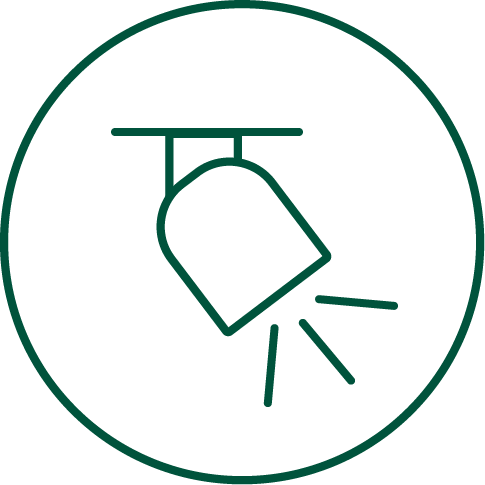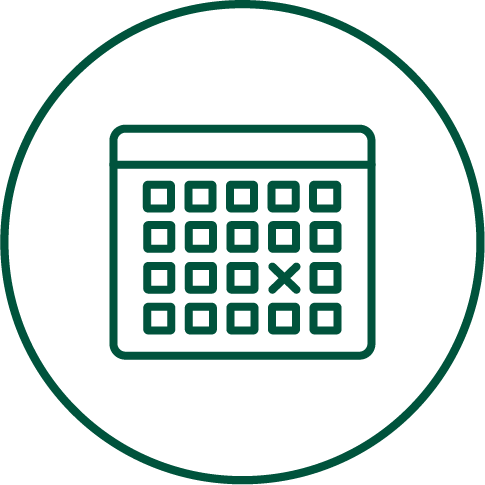Dear Reader,
Brace yourself—major policy changes are on the way, and we’ve got the key insights you need!
Welcome to Publyon’s Sustainability Newsletter—your go-to guide for navigating the fast-changing world of EU sustainability and industrial policy. With Brussels buzzing with new legislation, from green tech to industry simplifications, staying ahead isn’t just an advantage—it’s essential.
In this edition, we spotlight the upcoming European Commission 2025 Work Programme, which sets the course for EU sustainability and industrial policy. With major initiatives such as the Clean Industrial Deal and the Omnibus Simplification Package on the horizon, understanding their impact will be crucial for businesses and stakeholders alike. We’ll break down what’s happening, why it matters, and how you can stay ahead of the curve.
Plus, don’t miss our exclusive interview with Laurens van Delft, Director for Trade & Economics at the European Dairy Association, where we discuss key industry priorities and upcoming trade agreements. Let’s dive in!
Europe’s bold plan for sustainable growth, the “Clean Industrial Deal”, represents a major shift for EU businesses, especially in energy-intensive sectors. Don’t miss your chance to engage with the Commission to shape this deal and influence the policy direction for the next five years.

The spotlight
European Commission Work Programme 2025
Anticipation is growing as the European Commission prepares to release its Work Programme for 2025 on 11 February, outlining the Commission’s main priorities for the upcoming year. This year’s publication is especially awaited, not only because it is delayed – typically released in October of the previous year – but also due to heightened geopolitical tensions following Donald Trump’s re-election as US President, along with key EU proposals such as the Clean Industrial Deal.
As businesses and public entities brace for what lies ahead, Publyon has compiled valuable intel and insights to provide a comprehensive outlook in this edition’s Spotlight! Let’s hope it’s a program full of green lights for sustainability!
What can we expect from the Work Programme 2025?
Although the Work Programme has yet to be released, another crucial report has been published: the Competitiveness Compass.
Feeding into the Work Programme, the Compass offers valuable insights into what to expect for sustainability in 2025:
- The Clean Industrial Deal (26 February 2025) plays a crucial role in advancing the EU’s sustainability agenda by strengthening its position as a hub for green manufacturing. With a focus on energy-intensive industries, the Deal will promote clean technologies and circular business models to accelerate the transition toward a low-carbon economy.
- The Omnibus Simplification Package (26 February 2025) marks the first in a series of initiatives aimed at streamlining sustainable finance reporting, sustainability due diligence, and taxonomy, including the Corporate Sustainability Reporting Directive (CSRD) and the Corporate Sustainability Due Diligence Directive (CSDDD). The package seeks to align regulatory requirements with investor needs, establish proportionate timelines, and mitigate excessive reporting burdens on smaller companies within supply chains, ensuring a more efficient and balanced sustainability framework.
- The Water Resilience Strategy (Q2 2025) aims to safeguard water quality and availability while restoring the natural water cycle through a source-to-sea approach. It seeks to tackle the root causes of water challenges, enhance the sustainability of the water industry, and promote circular water management. The strategy will outline a vision for a water-resilient society, backed by concrete actions, and drive innovation in sustainable water solutions, including innovative financing mechanisms and the mobilisation of private capital for long-term resilience.
- The Circular Economy Act (Q4 2026) is set for proposal in 2026 but will already influence 2025 through extensive industry engagement, including impact assessments and public consultations. This process will lay the groundwork for the legislation, ensuring it aligns with sustainability goals and industry needs. As a result, it will play a key role in shaping the European Commission’s Work Programme for the year ahead.
The 2025 Work Programme is set to bring significant developments that will shape the EU’s sustainability and competitiveness agenda. With key initiatives on the horizon, businesses and policymakers must stay informed and proactive.
Publyon will be your guide, providing expert insights and updates to help you navigate these changes every step of the way. Stay tuned!

Policy update
Omnibus Simplification Package
The Omnibus Simplification Package, spearheaded by European Commission President Ursula von der Leyen, is a transformative initiative aimed at reducing bureaucratic complexity while maintaining the EU’s sustainability ambitions. By consolidating key sustainability frameworks such as the CSRD, CSDDD, and EU Taxonomy, the package seeks to streamline reporting obligations, enhance regulatory predictability, and lower compliance costs for businesses across Europe.
Current status
The Competitiveness Compass, published on 29 January 2025, outlines the Commission’s commitment to simplifying sustainability reporting, due diligence, and taxonomy rules. The package aims to mobilize investments in the clean transition while proportionately reducing reporting obligations, particularly for SMEs.
Implementation timeline
- 26 February 2025: Draft proposal presented.
- 2026: Expected adoption and implementation.
Essential insights for businesses
- Reduced administrative burden: Targets a 25% reduction for all companies and 35% for SMEs.
- Sustainable finance reforms: Aligns due diligence and taxonomy requirements with company size.
- New ‘Small Mid-Caps’ category: Introduces tailored regulatory simplifications for companies between SMEs and large enterprises.
- Simplification of CBAM: Eases compliance for smaller market players.
- Regulatory updates: Includes REACH revisions, pharmaceutical & medical device simplifications, and digital compliance enhancements.
- Harmonisation of Single Market Rules: Reduces regulatory fragmentation and prevents gold-plating by member states.
The package represents a major shift toward business-friendly regulations, enabling firms to reduce costs while maintaining compliance.
Vision for Agriculture & Food
The Vision for Agriculture & Food, led by the European Commission, is a pivotal framework designed to redefine EU agricultural policy over the next five years, balancing sustainability, food security, and economic viability. Replacing the Farm to Fork Strategy, this initiative seeks to ease regulatory burdens on farmers while promoting innovation and resilience in the agricultural sector.
Current status
- Developed from the Strategic Dialogue on Agriculture, incorporating input from 29 key stakeholders.
- The European Board on Agriculture and Food (EBAF) will be established to facilitate industry engagement.
Implementation timeline
- 19 February 2025: Vision presented by the European Commission.
- 26 May 2025: Policy debate at the Agriculture & Fisheries Council.
Essential insights for businesses
- Regulatory adjustments: May impact CAP funding and sustainability incentives.
- Industry Influence: The new EBAF provides a platform for industry stakeholders to shape policymaking.
- Market stability & trade: Expected impact on food pricing and EU trade agreements.
- Sustainability investments: Opportunities in carbon reduction and sustainable farming technologies.
The initiative will define the sector’s trajectory for the next five years, requiring businesses to align with evolving regulations.
Waste Framework Directive (WFD)
The Waste Framework Directive (WFD), a cornerstone of the EU’s circular economy strategy, introduces stricter waste reduction obligations and extended producer responsibility (EPR) schemes. The revision targets textile and food waste, establishing binding reduction targets and uniform waste management standards across the EU.
Current status
- Since 1 January 2025: Member States must implement separate textile waste collection.
- Trialogues between the European Parliament, Council, and Commission are ongoing.
Implementation timeline
- December 2027: Edible food waste reduction targets finalized.
- December 2028: EU-wide textile waste recycling and prevention targets
- By 2030: Legally binding food waste reduction targets (10% in processing, 30% in retail/consumption).
Essential insights for businesses
- Stronger waste reduction obligations: Extended Producer Responsibility (EPR) mandates for textiles and food.
- Circular economy compliance: Increased costs for EPR contributions and waste tracking.
- Impact on online marketplaces: Restrictions on selling non-compliant products.
Businesses should prepare for new compliance costs and regulatory obligations.
Food Contact Materials (FCMs) Regulation
The Food Contact Materials (FCMs) Regulation, spearheaded by the European Commission, is a major overhaul of EU food packaging laws, aligning with the Green Deal, Farm to Fork Strategy, and Circular Economy Action Plan. Focused on food safety and environmental sustainability, the regulation introduces stricter bans on hazardous chemicals, promotes reusable materials, and ensures regulatory harmonization across the EU
Current status
- Aligns with Farm to Fork Strategy and Circular Economy Action Plan.
- Introduces bans on hazardous chemicals in food packaging.
Implementation timeline
- 2025: Commission adoption of the new regulation.
- 2025–2027: Gradual implementation of revised safety and sustainability standards.
Essential insights for businesses
- Enhanced safety rules: Stricter chemical restrictions in food packaging.
- Harmonised EU standards: Eliminates fragmented national regulations.
- Supply chain impact: Businesses must transition to compliant materials.
Companies should monitor legislative updates to ensure compliance and invest in sustainable packaging solutions.
Ecodesign for Sustainable Products Regulation (ESPR)
The Ecodesign for Sustainable Products Regulation (ESPR), a flagship initiative of the European Green Deal, is designed to transform product sustainability standards across key industries. By introducing eco-performance criteria for durability, reparability, and recyclability, the ESPR aims to reduce environmental impact and enhance circularity in product design.
Current status
- Sets eco-performance standards for key product categories.
- Prioritizes electronics, textiles, furniture, batteries, and packaging.
Implementation timeline
- 2025: Commission adoption of product priorities.
- 2026–2027: Implementation of mandatory eco-design criteria.
Essential insights for businesses
- New sustainability standards: Covers durability, reparability, and recyclability.
- Transparency requirements: Digital Product Passports for traceability.
- Supply chain adjustments: Increased focus on low-impact materials.
The ESPR requires businesses to align product design with sustainability mandates and prepare for future regulatory shifts.

Expert interview
A conversation with Laurens van Delft
Laurence van Delft is the Director for Trade & Economics at the European Dairy Association (EDA) & European Whey Processors Association (EWPA). The European Dairy Association represents the European milk processing industry in Brussels. It is the first of all the European milk processors’ platform for exchange throughout all parts of Europe and across all types of dairy companies, cooperatives and privately-owned dairies, world dairy leaders and SMEs.
With Laurens, we discussed the Association’s main priorities for the past and new mandate, the upcoming agrifood legislation that they are monitoring for the sector, free trade agreements, and how to be a proactive stakeholder in Brussels.
Can you tell us a little bit about the European Dairy Association, and how big is the portion of the market that EDA represents?
I would say that the EDA represents around 95% of dairy producers in the EU. In EDA, our members are national associations. We have 20 member states which include the big EU dairy producers, such as Germany, France, Italy, The Netherlands, Poland, and Spain. We have the UK as a partner association, and Georgia as well. We are also working together with Ukraine, a country towards which we are an exporter of dairy products, so we see opportunities there. It is important for us, as since 2014 Russia banned the export of dairy products to their nation, as a result of the conflict in Crimea. This was a huge lesson for us, as it taught us to diversify our market. And this is why we want Free Trade Agreements (FTAs) with regions such as Southeast Asia and Latin America.
You are the Director for trade and economics at the European Dairy Association, where you have been working for the past six years. Can you share with us what you worked on in the past legislative mandate?
I’m responsible for trade and economics, which cover, in our case, the Common Agricultural Policy (CAP), international trade and intra-EU trade, and understanding the functioning of European markets through economic data collection from EDA members.
Concretely, this means that, in the past mandate, we followed the development of the current CAP, which was launched in 2023. We looked at all the proposals under the CAP, in particular those related to the common organisation of agricultural markets (CMO), and proposed amendments to both the European Parliament and the Council. For the CAP, we worked particularly with the European Parliament, with the Rapporteurs and all relevant Members of the European Parliament (MEPs). We had a couple of successes, for instance, the protection of dairy terms was kept in the legislative text.
We also worked on FTAs. I think it is no secret that not much materialised in the last mandate on this topic. But for us, one of the most important FTAs was the one with New Zealand, as they are the second biggest dairy exporter in the world. New Zealand, exporting around 95% of their production, so it is one of our biggest competitors.
Our goal in this FTA was to keep the tariff rate quotas (TRQs[1]), so it was clear there would not be unrestricted access for dairy from New Zealand, and to have as little dairy products from New Zealand coming in – and the other way around as well. And in this case, we backed our claims with sound economic data.
What are your main interlocutors in the European Union? You already mentioned the European Parliament and the Council of the EU, but what about the European Commission?
On policies that are of interest to us, we of course also engage with the European Commission even before the proposal is published. We normally have contacts with officers in the different European Commission Directorates-General, for instance, DG AGRI (Directorate-General for Agriculture and Rural Development), DG TRADE (Directorate-General for Trade) in my case, and DG SANTE (Directorate-General for Health and Food Safety) for some of my colleagues, to which we share documents such as position papers or letters. As you rightly said in your last LinkedIn video, “the early bird catches the worm.” So, if you really want to make your position heard in Brussels, you have to act even before the proposal is published. That is the moment where real change can happen.
You were talking about the Association’s interest in FTAs. Can you tell us what are the main markets in which you export?
Well, it is important to know that we export around 18% of our production, equal to around 18 billion euros of export. With regards to our main markets, it depends on the product. We export to the US, UK, Japan, and China. We see enormous potential in regions such as the Middle East and Southeast Asia, in particular Indonesia, Thailand, and Vietnam.
What you will be focusing on in the new mandate and what will be your priorities on upcoming legislative files?
With regards to the upcoming new CAP, we started inviting EU policymakers to discuss our positions already in 2023, and we were able to list them and share them with the European Commission. Our priorities include:
- Keep supporting sustainable dairy;
- Food security and affordability;
- Protecting dairy excellence;
- A well-functioning market and supply chain relations;
- Promoting dairy consumption at national level with measures such as school milk schemes;
- Common rules on competition to make sure that the market is functioning;
- “To measure is to know,” meaning having more legislation coming from Brussels backed by impact assessments and scientific data.
Following up on the report and recommendations from the Strategic Dialogue on the Future of Agriculture in the EU, in the new mandate, we foresee the publication of numerous EU legislation impacting the agricultural sector. One of these is the upcoming EU Vision on the Future of Agriculture, expected in February 2024. How does the EDA perceive this forthcoming document, and what key priorities should it address to support the dairy sector’s sustainability and competitiveness?
For the time being, we have a limited view on how the Vision will look like concretely. It will partly depend on the new European Board on Agriculture and Food which is now being put together. But, of course, we have seen the outcome of the Strategic Dialogue on the future of EU agriculture. I believe it is good that there is a renewed interest in Brussels for the agricultural sector, and that the focus on sustainability takes now into account the three pillars on which sustainability is built (environmental, social, and economic). In the past mandate, we saw the attention of the European institutions focusing more on environmental sustainability, at the risk of losing the social and economic part of it in the end. So we are of the idea that more balance has been finally found, with economic sustainability also being in focus.
We will have to see how this will develop in the new mandate and monitor that the pendulum does not swing completely in the opposite direction, meaning focusing only, for instance, on farmers’ income. I believe it would be good to look at all the actors in the sector, to secure a fair distribution of economic wealth to the whole supply chain.
Can you tell us a bit about your experience with the European Parliament? Do you see a shift of focus also among the MEPs on the topic of sustainability?
I would say there is definitely a shift in the with the new European Parliament. I think the Green Deal and the position of farmers are viewed differently by the European Parliament and, of course, the dominance of the EPP plays a crucial role there. But again, we have to see how this shift will materialise in the end, as everything can be easily said at the beginning of a new term, with lots of proposals already being put out. For instance, I saw that the French now want to postpone the Corporate Sustainability Due Diligence Directive. Now, one can be fine with such a postponement, but policymakers must realise that huge investments and commitments are being made by the industry and that legislations cannot be made and changed every five years.
One of the most contested trade agreements by the farming sector is the EU-Mercosur agreement, which was finalised in December 2024. Can you tell us how the EDA sees this agreement and what opportunities or challenges you foresee?
I know this agreement has been extremely controversial for most agrifood industries. However, for the dairy industry, it fits our trade strategy, and we see opportunities for us. The TRQs are favourable to us. Currently, the exports of dairy products from the Mercosur to the EU are neglectable, and for our export towards the Mercosur area it is not at its full potential, but now we can increase the market access.
I know that the agreement is not beneficial for all sectors, such as the beef and sugar sectors. However, I do not believe that the agreement will have a significant impact on them as they claim it to be. John Clark, the former Director for international affairs in DG AGRI, wrote some interesting articles about the impact of the EU-Mercosur agreement, and he also stated that the expected impact will not be as big as these sectors claim it will be.
But in the end, yes, it is a beneficial agreement for us, as it allows us to diversify, as mentioned before.
Are there any other upcoming trade agreements you are also observing that may have an impact on the EU dairy sector?
Yes, we are encouraged by the positive momentum from the EU Commission regarding our trade priorities, and we are hopeful for similar successes to follow, as we have recently seen in Latin America. We have seen that this chapter has been closed with several agreements, such as the ones with the Mercosur, Mexico, and Chile. We are looking forward to an EU-Thailand FTA and EU-Indonesia FTA, and we see Malesia and the Philippines as markets with enormous potential for us. Therefore, Southeast Asia is the area which we would like to see the new European Commission focus on.
—
[1]Tariff rate quotas (TRQs) allow a pre-determined quantity of a product to be imported at lower import duty rates (in-quota duty) than the duty rate normally applicable to that product.

Blog
EU Circular Economy Act: what businesses need to know
With the EU Circular Economy Act expected to be published next year, lobbyists are already preparing for the upcoming public consultations. Get insights on what to expect from the Act and how you can influence it.
READ ARTICLE

Events
Find a detailed overview of Brussels’ main sustainability related events that you absolutely should join this month.
- 4 February, the Parliament Magazine: 2nd Annual European Blue Economy Conference; Location: NH Collection Grand Sablon, Rue Bodenbroek 2, Brussels
- 5 February, Belgian Ministry of Economy: IEA: World Energy Outlook; Location: Square Event Center, Brussels
- 6 February, the Parliament Magazine: Clean Energy Transition Conference 2025; Location: Sofitel Hotel Brussels Europe, Place Jourdan 1, Brussels
- 6 February, Euronews: Destination Europe Summit 2025; Location: Autoworld, Parc du Cinquantenaire 11, Brussels
- 12 February, Bruegel: The future of electricity demand; Location: Bruegel HQ Rue de la Charité 33, Brussels
- 13 February, CEPS: Climate negotiations under scrutiny: is UNFCCC decision-making up for the challenge?; Location: CEPS HQ Place du Congrès 1, Brussels
- 19 February, CEPS: Strengthening EU Competitiveness: what role for the next MFF?; Location: CEPS HQ Place du Congrès 1, Brussels
- 25 February, Euractiv: Europe’s CRM supply chain: from raw materials to steel to automotive; Location: Euractiv HQ, Boulevard Charlemagne 1, Brussels
- 26 February, Politico: The Seventh Carbon Budget Launch, TBC
- 3 March, Euractiv: EU Forest Strategy 2030 – Progress and challenges near the halfway mark; Online

Eliza Druta
Hi, my name is Eliza and I am curating this newsletter to bring Brussels’ main sustainability insights to your inbox, every month. Do not hesitate to reach out should you need more information on the newsletter’s content or if you have suggestions for our next editions.
Contact




